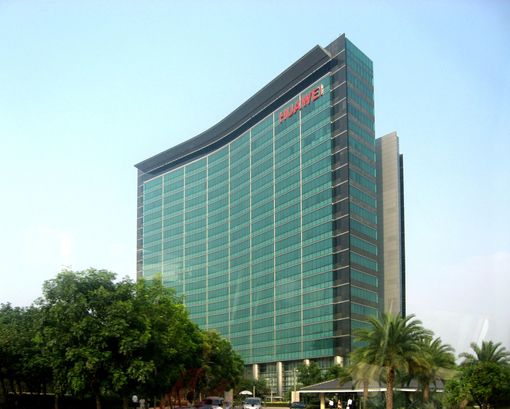
Photograph Source: Brücke-Osteuropa – Public Domain
With its criminal indictment at the beginning of the year the US government has successfully made Huawei the poster child for technology theft by China. But the indictment is an embarrassment. Huawei is not a thief.
Huawei is charged with stealing technology for a robot that T-Mobile-USA uses to test phones. The robot, “Tappy,” taps phones repeatedly to determine their durability. Huawei wanted T-Mobile to offer its phones to its subscribers, and eager for its phone to pass the test, sent engineers to T-Mobile’s lab to learn how Tappy works. One of the conditions T-Mobile set for permitting Huawei to examine Tappy was that the robot would not be photographed. But a Huawei engineer did photograph it, and the indictment alleges that this was a breach of a trade secret. It first tells to what length T-Mobile went to keep Tappy a secret, and then it recounts how the Huawei engineer went about photographing it secretly. Reporting about the indictment NPR told its readers “[w]e would like to include a photo here of Tappy, but photographing the robot is expressly prohibited by T-Mobile, and Tappy is kept under very tight security in a lab at T-Mobile headquarters in Bellevue, Wash.” What the indictment does not say is that Tappy is not a secret but a sales-prop. T-Mobile invites customers to “Say Hello to T-Mobile Tap Happy” in a video that displays it in operation. Huawei did sign a confidentiality agreement that prohibited it from photographing Tappy, but when it did, it was not photographing a secret.
The indictment also misleads when it claims that a Huawei employee removed an arm of the robot from the lab in order to take its measurements. T-Mobile’s video shows that Tappy is an Epson robot (M.S.R.P. $7,495) with an arm that operates a short rod. T-mobile covers the tip of the rod with a rubber cup, and the cup taps the screen of the phone that is being tested. Huawei did not remove the arm of the robot (it did not need to, all it had to do is buy an Epson robot); it removed the rubber cup. Huawei was concerned because it was unable to replicate T-Mobile’s test results, and suspected that the discrepancy was due either to the dimensions or degree of softness of the tip. Huawei did this without permission, but describing Huawei’s action as removing an arm of a robot so secret that no photographs of it exist is dishonest because it makes it appear to be a lot more sinister than the actual removal not of an arm but of a rubber tip.
All of this, and more, is known, because T-Mobile has already sued Huawei for the theft in civil court, and a verdict was reached in 2017. In the civil trial, the jury heard evidence from experts of both sides. One of Huawei’s expert’s testified that Tappy simply did not work. It did not trigger the touch threshold unless it used so much force, it overly bent the screen. T-Mobile’s inventor of Tappy acknowledged this problem when he testified in court that Huawei’s expert testimony “reinforces the need for a rubber tip redesign.” Another expert for Huawei, using T-Mobile’s own data, showed that Tappy had no effect on the rate that phones were returned to T-Mobile. It is perhaps understandable why Huawei’s engineers became desperate: The problem was not that they did not understand how Tappy works, the problem was that Tappy did not work and that T-Mobile was reluctant to acknowledge it because it did not want to lose this prop. It appears that the jury suspected as much. It found Huawei guilty of breaching a confidentiality agreement it signed with T-Mobile and fined it $4.8 million for it, but it also found that T-Mobile suffered no damage at all ($0) from the breach, and that the breach was neither willful nor malicious. It must also be noted that the civil suit notwithstanding, T-Mobile wanted to offer its customers Huawei phones when the US government intervened to ban its sale not only by T-Mobile, but also to AT&T and Sprint.
Huawei did not steal technology and there has so far been no evidence presented that demonstrates that it is a thief. Is the US losing its technological dominance, then? Huawei’s success suggests that it is. But for American workers, this is something to celebrate. As I explained in a previous article, when other countries are technologically backwards, American workers lose jobs. An even spread of scientific knowledge is not our enemy; it is our hope.